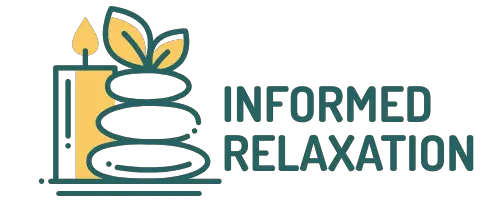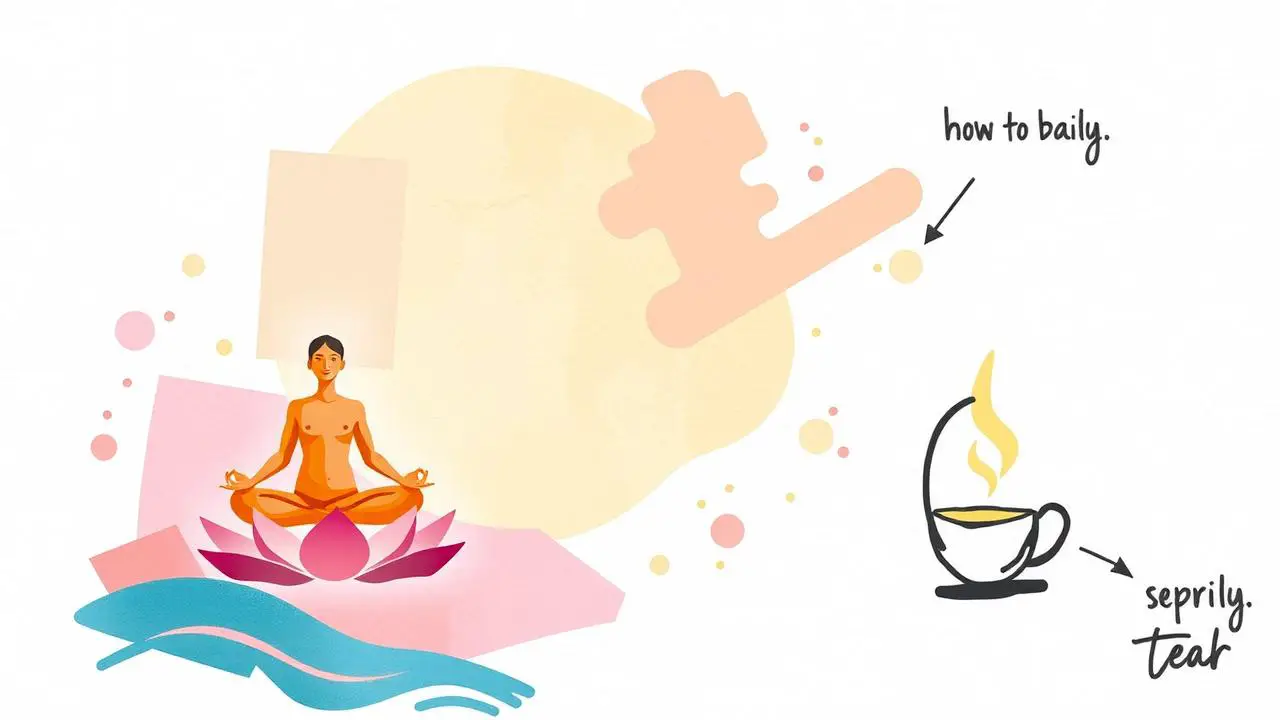Do you ever feel overwhelmed by the constant influx of tasks, worries, and anxieties? Are you looking for a way to free yourself from the stress and clutter of your everyday life? If so, learning how to empty your mind can be a powerful tool.
Emptying your mind can involve different techniques such as meditation, deep breathing, journaling, or practicing mindfulness. These techniques can help you focus on the present moment and let go of thoughts and worries that are causing mental clutter. Experiment with different techniques to find what works best for you.
Emptying your mind is a powerful mental health practice that helps to relieve stress, increase focus, and bring clarity to our lives. In this article, we’ll explore how you can use it to gain freedom from the chaos in your head.
The thought of emptying your mind may seem daunting. But it doesn’t have to be; with the right techniques and tools, anyone can learn how to clear their minds and find peace.
We’ll explore different ways to clear away mental clutter and provide practical advice on how you can start using this strategy for greater mental freedom today.
Benefits of A Clear Mind
Having a clear mind can be like taking a deep breath of fresh mountain air. It’s a chance to break away from the chaos of the world and find inner peace.
Positive visualization, mental discipline, physical exercise, healthy diet, and mental rest are all important tools for achieving this sense of clarity.
Visualizing yourself in a peaceful place with your goals within reach can help you gain perspective on difficult situations.
Additionally, regular physical activity helps reduce stress and improve concentration.
Eating a nutritious diet is also essential for reducing anxiety and improving cognitive functioning.
Finally, it’s important to take time for yourself to rest and relax without feeling guilty about it.
Taking intentional steps to reduce stress can help lead to calmer days ahead.
Techniques to Reduce Stress
Meditation is an effective way to reduce stress, as it allows you to clear your mind and focus on the present moment.
Mindfulness is another beneficial technique, as it encourages you to be aware of your thoughts and feelings, and to respond to them in a helpful way.
Breathing exercises can also help you relax and reduce stress, by allowing you to take deep breaths and focus on your breathing.
Journaling is a great way to release pent up stress and emotions, and can help you gain clarity and perspective.
Yoga is a great way to reduce stress, as it helps you to move your body and focus on your breath.
Exercise is a great way to reduce stress, as it helps to release endorphins and release tension from your body.
Nature walks can be beneficial for stress reduction, as it can help you to connect with the natural world and find peace.
Music can be a great way to reduce stress, as it can help you to relax and escape from the worries of the day.
Coloring can be a great way to reduce stress, as it allows you to focus on creating something and be creative.
Positive affirmations can help to reduce stress, as it encourages you to focus on positive thoughts and feelings.
Aromatherapy can be a great way to reduce stress, as it can help to relax your body and mind.
Talking to friends can be a great way to reduce stress, as they can provide a listening ear and offer comforting words.
Reading can be a great way to reduce stress, as it helps to take your mind off of your worries and focus on something else.
Spending time with pets can be a great way to reduce stress, as animals can provide comfort and unconditional love.
Playing games can be a great way to reduce stress, as it can provide an enjoyable distraction from worries.

Meditation
Stress can be a major source of unhappiness and an obstacle to achieving emotional balance. Everyone needs relaxation techniques in order to reduce stress and maintain their mental health.
One of the most effective ways to achieve this is with meditation. This simple practice has been proven to help ease tension, increase focus, and promote feelings of calmness and clarity. With consistent practice, meditation can be used as a tool for reducing stress and improving overall mental health.
By taking time out of your day to sit in stillness and observe your thoughts, you can gain greater insight into yourself and cultivate an inner peace that will help you manage stressful emotions more effectively. Let go of worry and give yourself permission to relax into the present moment – this is the key to unlocking true relaxation through meditation.
Mindfulness
Mindfulness is a powerful tool for reducing stress and improving mental health. This practice involves intentionally focusing on the present moment with an attitude of acceptance, self-compassion and non-judgment.
By cultivating mindfulness, we can learn to recognize our thoughts and feelings without becoming overwhelmed or consumed by them. With this newfound awareness, we can begin to work towards positive intentions and goals that lead to greater well-being.
Mindful eating is another important part of stress reduction – by savoring the experience of food instead of simply going through the motions, we can learn to appreciate our meals in a more meaningful way.
Self care is also essential for reducing stress – taking time out for yourself each day can help ensure that your emotional needs are met and that you have the energy necessary to face whatever life throws at you.
So take a deep breath and enjoy the freedom that comes with mindfulness – it’s an invaluable tool for achieving true relaxation.
Breathing Exercises
Breathing exercises are a great way to bring self-awareness while calming the mind and body. They can be used to break through mental blocks and allow us to enter a state of physical relaxation.
Taking time to focus on the breath can help us gain clarity and increase our ability to cope with stress. With mindful breathing, we can become aware of our innermost thoughts, feelings, and sensations without judging ourselves for having them.
This creates an opportunity for freedom from the pressure of expectations and allows us to fully appreciate life’s moments. So take a few minutes each day to practice mindful breathing – it could be the key to unlocking true relaxation and peace in your life.
Meditation Practices
Meditation is a powerful tool that can help you empty your mind of unwanted thoughts.
Creative visualization, physical exercise, affirmations recitation, guided imagery and mental imagery are just some of the techniques you can use to achieve a clear, focused state of mind.
Creative visualization involves visualizing a desired outcome or goal and focusing on it until it becomes reality.
Physical exercise helps to reduce stress, while reciting affirmations can help reprogram the subconscious mind.
Guided imagery is another helpful tool as it allows you to access deeper parts of your brain in order to create inner peace.
Mental imagery is also useful for calming the mind and for helping with problem-solving.
These practices have been shown to have positive effects on mood and mental wellbeing.
Through regular practice, they can help you become more mindful of your thoughts and feelings – allowing you to be present in each moment free from judgement or distraction.
With this newfound clarity, you will be able to move forward into the next step: Breathwork and Mindfulness.
Breathwork And Mindfulness
Peaceful practices and powerful processes can help one to empty their mind. Through yoga breathing, mindful eating, and creative visualization, a person can learn to let go of the thoughts that no longer serve them.
A three step plan for success could include:
- Taking time for self-awareness
- Incorporating relaxation exercises into daily life
- Focusing on the present moment
The journey of clearing the mind is both calming and challenging; it requires consistent effort and commitment to make headspace for clarity and peace. By engaging in regular breathwork and mindfulness exercises, a person can begin to release stress and dissolve worries.
You should also check out this article on the power of breathwork.
Letting go of expectations, allowing old patterns to fade away, and becoming aware of one’s mental state are all part of this process. With an open heart and clear head, the individual can move into a place of balance where there is space for joy, creativity, growth, and inner peace.
This newfound freedom may lead to profound shifts in attitude and lifestyle as they explore new possibilities within themselves. Emptying the mind can lead to truly transformative experiences that catapult one forward into living their best life.
Journaling And Reflection
When it comes to managing one’s mental health, there are many ways to bring clarity and peace of mind. Positive self talk, creative visualization, physical exercise, daily gratitude and healthy eating are all strategies that can help us foster a sense of calm and well-being.
With consistent effort and dedication, we can learn to reframe our thoughts and find new perspectives in challenging situations. These practices can also be used to clear the mind of distractions and negative thoughts.
Taking time for quiet reflection allows us to step away from a chaotic situation or environment and gain insight into our feelings. We can begin to process events more objectively and proactively work towards finding solutions that bring balance into our lives.
Making these habits part of our regular routine helps us make better decisions, become more mindful in our actions, and move closer towards achieving mental clarity.
Achieving Mental Clarity
Discovering mental clarity is an essential part of cultivating a happier and healthier life. To do this, it is critical to practice creative visualization, emotional balance, physical exercise, thought awareness, and positive outlook.
Creative visualization is a powerful method of achieving mental clarity by allowing the mind to focus on positive and inspiring images. This helps to eliminate negative thoughts and bring peace to the mind.
Emotional balance can be achieved by recognizing one’s own feelings and responding accordingly.
Physical exercise is also necessary as it releases endorphins that can help reduce stress levels.
Thought awareness involves taking time to identify any irrational or destructive thoughts that could be hindering progress towards mental clarity.
Finally, having a positive outlook on life can help one stay in control and keep emotions in check.
These strategies are key for achieving mental clarity and reducing stress levels. By making conscious efforts to practice these techniques each day, we can break free from our anxieties and find inner peace.
Frequently Asked Questions
What Are The Best Mental Clarity Exercises?
When it comes to achieving mental clarity, there are some simple exercises that can help.
Deep breathing, self-reflection, cultivating a positive mindset, connecting with nature, and mindful eating are all effective ways to reduce stress and find clarity.
Such exercises provide an opportunity to step away from day-to-day thoughts and worries, creating space for deeper insight into one’s life and lifestyle.
Taking the time to practice these activities can help bring about a sense of freedom and space for growth for those seeking a more conscious approach to their wellbeing.
How Can I Stop My Mind From Wandering?
Have you ever found yourself struggling to keep your mind from wandering?
It can be a challenge to stay focused and present when thoughts are constantly distracting you.
If this is something you’re looking to overcome, there are many simple visualization techniques, breathing exercises, positive affirmations, journaling prompts and relaxation exercises that can help.
These strategies have been proven to reduce mental chatter and give you the clarity and focus you need for deeper concentration.
So why not try them out today?
See which ones work best for you and get ready to experience a newfound sense of freedom from distraction.
How Long Should I Practice Mindfulness And Meditation?
Practicing mindfulness and meditation can be a great way to manifest greater clarity in your life. Not only does regular meditating come with numerous mental benefits, but guided meditations and calming techniques can help you to better understand how to empty your mind.
Mindful breathing is one of the core components of meditation, and this simple exercise can be incredibly helpful for those looking for freedom from intrusive thoughts.
Taking time each day to practice mindfulness and meditation can have a tremendous impact on your well-being, so don’t hesitate to give it a try!
Are There Any Tools Or Apps That Can Help Me Clear My Mind?
Are you looking for a way to clear your mind? You’re not alone.
There are many tools and apps available to help you relax and find moments of peace. Calm breathing, positive affirmations, guided imagery, creative visualization, and self-reflection can all be used to create a sense of inner stillness.
With the right approach, these strategies can help you move towards greater freedom and relaxation. Whether you choose an app or simply take some time out of your day to focus on yourself, there are plenty of ways to empty your mind.
What Is The Most Effective Way To Empty My Mind?
Everyone has moments when their mind feels cluttered and overwhelmed. To help clear that mental fog, there are several effective ways to empty your mind, such as mindful walking, breath work, journaling, visualization techniques and yoga stretches.
Mindful walking is a great way to clear your head; it involves focusing on the present moment and breathing deeply as you take in your surroundings.
Breath work is also an effective way to bring focus back to the present moment by using conscious breaths to bring awareness to the body.
Journaling can help to process and release any negative emotions or thoughts that may be clouding your mind.
Visualization techniques can be used to relax the body and clear the mind while creating a sense of calmness.
Lastly, yoga stretches can help you feel more grounded while helping you stay in tune with your body.
All these techniques are powerful tools for emptying your mind and achieving a greater sense of peace and freedom.
Can Emptying Your Mind Lead to Relaxation?
Emptying your mind of clutter and worries is one of the key causes of relaxation. By letting go of stress and focusing on the present moment, you can create a sense of calm and peacefulness. Embracing mindfulness and clearing your thoughts can lead to a more relaxed state of being.
Conclusion
It is important to remember that emptying our minds is an ongoing process that takes practice and patience. We must be willing to put in the effort to take control of our thoughts and feelings and create a sense of mental clarity.
With mindful exercises, we can learn to observe our thoughts without getting attached to them, allowing us to create space for new ideas and possibilities. The best way to empty the mind is through regular mindfulness and meditation practices.
By focusing on the present moment, we can begin to notice which thoughts are helpful and which ones are not. We can also use tools like apps or even writing down our thoughts as a way of releasing them from our minds.
Ultimately, it’s up to us how we choose to manage our minds and emotions. Taking the time each day for self-care activities such as clearing your mind through meditation can help you stay grounded in the present moment, gain greater insight into your own behavior, and ultimately lead you towards inner peace and balance.
How Do I Empty My Mind?
Do you ever feel overwhelmed by the constant influx of tasks, worries, and anxieties? Are you looking for a way to free yourself from the stress and clutter of your everyday life? If so, learning how to empty your mind can be a powerful tool.
Emptying your mind is a powerful mental health practice that helps to relieve stress, increase focus, and bring clarity to our lives. In this article, we’ll explore how you can use it to gain freedom from the chaos in your head.
The thought of emptying your mind may seem daunting. But it doesn’t have to be; with the right techniques and tools, anyone can learn how to clear their minds and find peace.
We’ll explore different ways to clear away mental clutter and provide practical advice on how you can start using this strategy for greater mental freedom today.




